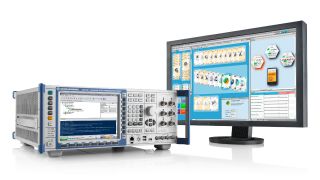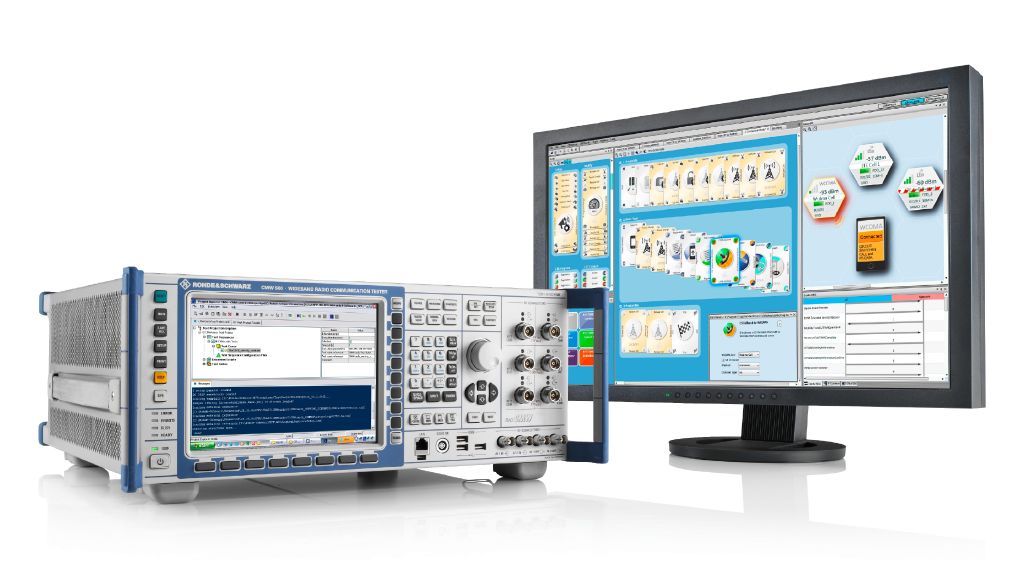R&S®CMWcards simplifies verifying your NB-IoT OTDOA positioning design
R&S®CMWcards is an intuitive and user-friendly software application that makes NB-IoT OTDOA positioning design verification easier than ever.

R&S®CMWcards is an intuitive and user-friendly software application that makes NB-IoT OTDOA positioning design verification easier than ever.


3GPP Release 14 further improves NB-IoT to enhance the user experience. Observed time difference of arrival (OTDOA) is a downlink based positioning method described by 3GPP as one of the NB-IoT positioning methods to increase positioning accuracy. It utilizes neighbor cells to derive an observed time difference of arrival (ToA) relative to the serving cell.
Depending on which positioning mode is configured, either UE based or UE assisted, the NB-IoT device will measure and determine the position (UE based), or it will send the measurement to the network for position determination (UE assisted). A positioning accuracy of less than 50 meters can be achieved with the OTDOA method.
NB-IoT devices with the positioning feature make many new products and services possible, such as wearables, smart bicycles, asset tracking, pet tracking and environmental monitoring.
Let us take a look at a typical NB-IoT positioning use case. A bicycle equipped with an NB-IoT module from a bike sharing company is on the move in the densely populated Tokyo city. While moving, the device will certainly experience power level changes and the observed time difference of arrival from different cells dynamically changes due to the varying cell distances. The position of the bicycle is measured and calculated based on the OTDOA positioning method. This positioning information is transferred to the company server for asset tracking purposes.
From the device perspective, the following tests need to be considered:
Is there a way to verify or benchmark those test aspects under various network deployment scenarios in a repeatable, deterministic lab environment while keeping the test script development efforts to a minimum? The answer is yes. R&S®CMWcards is the right solution to overcome such test challenges.
R&S®CMWcards is a graphical test script creation tool that is used on the R&S®CMW500 wideband radio communication tester. It requires no programming knowledge. By simply setting up a hand of cards, you can create various signaling test scripts to simulate NB-IoT cells and verify the protocol behavior of your device. Each card comprises predefined protocol procedures, yet provides the flexibility to allow the user to adjust the signaling parameters. The built-in error check functionality of each card ensures the conformity of the signaling flows.
The typical NB-IoT OTDOA positioning use case mentioned above can be verified by simply creating a test script in R&S®CMWcards as shown below. In the preamble part of the test script, a four-cell environment for the NB-IoT device is set up and activated. During the cell setup phase, the time difference of the cell is simulated to generate the basis for the OTDOA positioning method. The main test script adjusts the cell transmission power to simulate the NB-IoT device in a dynamic moving scenario. The device registration procedure is encapsulated in the “Registration” card. Location based services are then configured in the “Start LBS” card that includes the positioning method (OTDOA in this case) and location scenarios (e.g. Tokyo).
The positioning mode (UE based or UE assisted) and positioning procedure (user plane or control plane) are specified in the “Location Verification” card, where the accuracy of the position information is finally verified with a verdict.


Typical example of an NB-IoT OTDOA positioning test script.